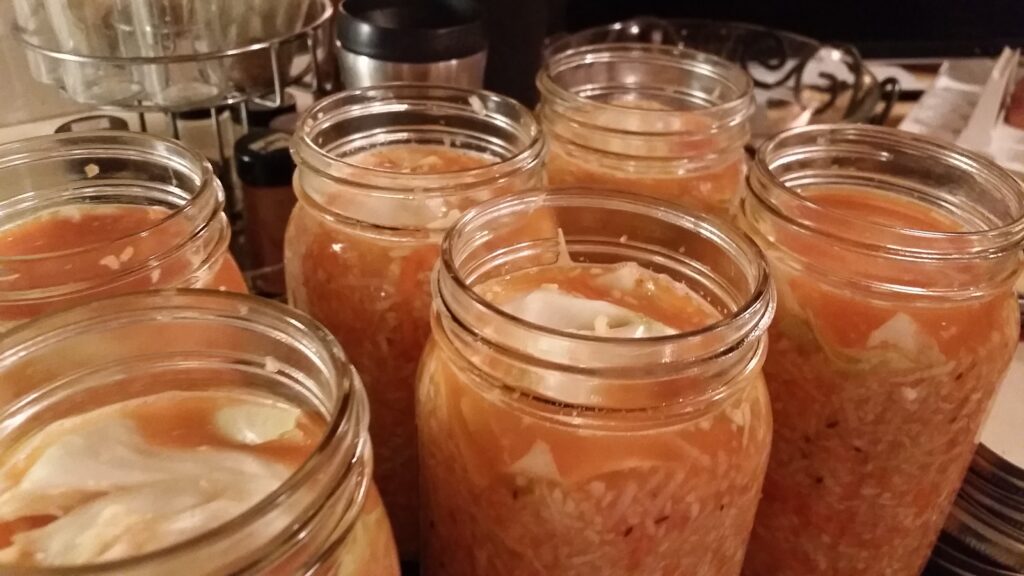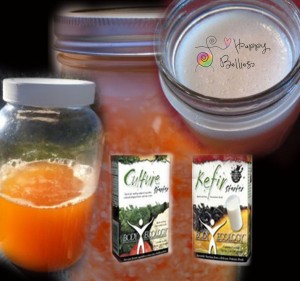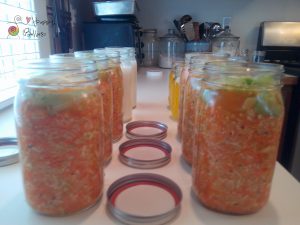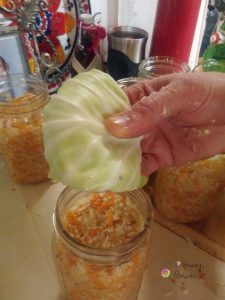Beginner Recipe for Probiotic-Rich Unsalted Cultured Vegetables
Tara Carpenter, NC.
Nutrition Consultant helping people heal with therapeutic nutrition.

Originally published on February 19, 2015.
This is a great recipe to begin with if you are new to making unsalted cultured vegetables the body ecology way. I call this one Garden Blend because it contains three ingredients …. cabbage, carrots, culture starter. Don’t let simplicity fool you! This potent, probiotic food can kick-start near any “gut engine” into gear and have you digesting like a rock star ✨
A colorful mixture to light up your taste-buds.

Unsalted cultured vegetables a.k.a “cv’s” can knock out the toughest pathogenic bacteria, yeast, and viruses living in the body. I discovered this amazing food when I had a stubborn case of yeast overgrowth that had me keeled over in pain from intense bloating in my gut. A friend, who thought I was pregnant because I was so bloated, lent me the book Body Ecology Diet with a chapter on unsalted cultured food. I was hooked!
Cultured vegetables were the missing piece to my healing. I felt so grateful for this finding because for years I had struggled with digestive issues. I am all better now in this department and many years have since passed, yet still I get in the kitchen regularly to make this recipe along with Purple Potion that is loved by kids of all ages. Of course, I am quick to share with people who eat from these jars that this food can keep inner ecosystem in balance.

Every time you eat, you either feed or fight disease.
Beginner Recipe for Unsalted Cultured Vegetables
Yields: 6 Quart Sized Jars
Ingredients
1 packet vegetable starter culture*
1/4 cup warm filtered water
½ tsp EcoBloom** (or Rapadura, sucanat etc.)
7 1/2 – 8 lb washed, green cabbage (about 3 heads), shredded – reserve 12 oz. large outer leaves.
2 – 2 1/2 lb carrots, shredded
1 1/2 Tbsp. dill seed
2-3 cups filtered water.
Materials
Food Processor
Blender (optional)
Large Stainless Steel or Glass Bowls
6 Quart-Sized Mason Jars
Wide Mouth Funnel
Good Knife
Instructions
Scald/Wash equipment with hot, soapy water OR spray down with food-grade hydrogen peroxide in small spray bottle and dry with paper towels.
Dissolve starter and EcoBloom in ¼ c. warm (90-degree F) water and let sit still for 20 minutes.
Combine vegetables and seasoning in a clean, large bowl.
Remove third of mixture, place in blender (small blender? do in two batches), blend with 2-3 pure water to a consistency of thick juice and add to bowl of vegetables.
Mix everything with spoons or clean hands and pack tightly into pint or quart-size glass jars with potato masher, or fist to force out air pockets.
Fill jars until liquid covers vegetables with 1 1/2-inches head-space.
Roll reserved cabbage leaves to form tight logs and place on top of veggies, pushing down so liquid just covers “logs” (add more brine if needed) – leave 1-inch at top for expansion.
Screw lid on tightly and culture 3-10 days in a dark, warm spot (70-72 degrees F) – do your best to keep temperatures constant, is very important to have them steady during the culturing period. I like mine around day 7 but everyone likes different textures and sourness so learn what day you like them best at 🙂
Eat up to ½ cup with meals (this is a therapeutic dose, ease into this).
Excellent Tara …. I’m excited to be on this path of making cultured veggies and kefir to infuse them in my body! Feeling sparkly! ~ B.U. Bethel, VT
Tips & Tricks
- Use porcelain weights to keep veggies submerged under brine.
- Go slow! Cultured veggies are rich in enzymes/probiotics, ease in to eating them. Once body gets used to extra alive activity, up dose.
- Store cultured veggies in fridge where they ferment at slow pace for weeks (even months), becoming softer, more delicious with time.
*culture starter makes potent cv’s because contains Lb. Plantarum, strong probiotic strain. Most probiotics get destroyed by antibiotics, fluoride, stomach acid, and chlorinated water before reaching the intestines, where they live. These guys (Lb. Plantarum) get there safe n sound.
**Ecobloom is 100% natural powder chicory extract FrutaFit, Inulin (FOS – fructooligosaccharides). This prebiotic is a quick food for the probiotics. Like the ones in that culture starter packet you’re using. When you add Ecobloom you provide something for the little guys to munch on while they’re adjusting and growing in numbers in the jar.
May all bellies be happy!

References
Gates, D. (2010). The Body Ecology Diet. Bogart, GA: B.E.D. Publications
Disclaimer: This post may contain affiliate links for products I believe in and use on a regular basis. See more here. All content is for general information only, primarily educational in nature, and should not be treated as a substitute for the medical advice of your primary health-care practitioner that you, the reader, may require for any cause whatsoever, now or in future. Please consult your primary practitioner regarding any health problem(s) you have and keep them informed to the opinions, ideas, and advice on this site that you find useful. Please email me at tara@happybellies.net for any questions or concerns that you have.
© Happy Bellies Therapeutic Nutrition blog is copyrighted information. Do not repost my recipe or post on your blog, Facebook, or other website. Posting ingredients and sharing my photos is permitted with a link back to my site for full recipe or post.





7 replies on “Beginner Recipe for Probiotic-Rich Unsalted Cultured Vegetables”
No. Though I used when I was 1st beginning to learn how to make cv’s…I was so worried that the jars would explode! Now I know how to pack them properly and so don’t worry anymore. If you do burp them then I’d suggest sticking the jar you did that to in the fridge and consider it done fermenting.
Do you burp your jars at all during the 3-10 day fermentation process?
Tara, it looks like you use the core and all of the cabbage. Is that right? Also, I couldn’t hear the variations after the cabbage/beet one. Would you, please, write out those variations? Fun seeing the kids. Great job, Tomas and Tara!
Jenneta,
I get my 3% food grade hydrogen peroxide online at Live Superfoods. You may be able to find yours more locally at a pharmacy, etc. but I have not had luck in my area.
Tara
Tara,
where do you get your food grade hydrogen peroxide?
thanks,
Jenneta
I do not add any water to my Food Grade hydrogen peroxide….Just straight I find to be just fine!!
Hi Tara!
Thank you for sharing your recipe and the video. What is the ratio of peroxide to water in your spritzer bottle?
Thank you,
Jenneta